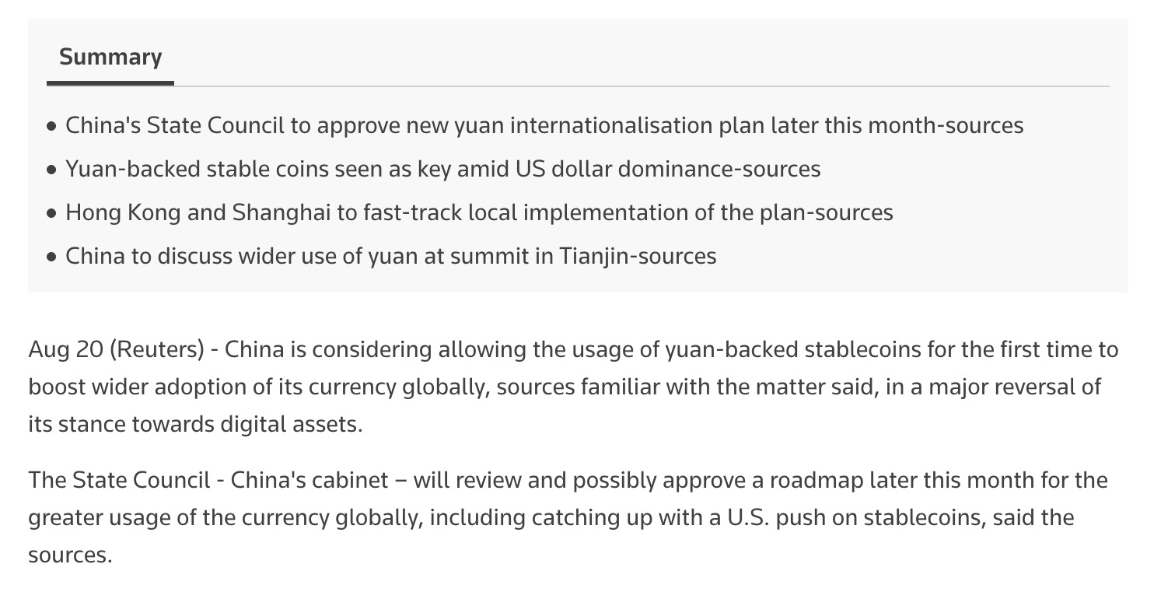For the first time, China is considering allowing the development of a stablecoin pegged to the yuan (CNY) to expand the role of its currency in global trade and payments. The State Council is expected to review and possibly approve this roadmap in August, marking a significant shift in Beijing’s digital asset policy.
Importance of This Move

This potential decision is particularly significant for several reasons:
- Change in Policy Stance: This is a clear reversal, as China had completely banned cryptocurrency trading and mining in 2021.
- Stablecoin Market Competition: A CNY stablecoin could challenge the dominance of USDT and USDC, which currently account for over $234.6 billion of the total $280 billion market capitalization of global stablecoins.
- Improved Cross-Border Payments: This technology allows for faster payments, lower costs, and 24/7 operations, potentially replacing part of the traditional SWIFT system.
- Support for CNY Internationalization: This is a crucial tool to support Beijing’s long-term goal of enhancing the yuan’s position in the international market.
Current Market Context
- Challenges for CNY: The share of the yuan in global payments has dropped to just 2.88% (June 2025), the lowest level in two years, while the USD still accounts for 47%, according to SWIFT data.
- US Policy: In contrast, under President Donald Trump, the US openly supported stablecoins and implemented the GENIUS Act regulatory framework to promote the development of a digital USD.
- Hong Kong’s Actions: This administrative region is exploring a stablecoin licensing mechanism to attract businesses, following the passage of stablecoin legislation in late May 2025.
Related: Crypto Lawyer Exposes Major Weakness in USDT, Claims RLUSD Is Superior
Recent Developments
- e-CNY Expansion: On June 18, 2025, the People’s Bank of China (PBoC) expanded the e-CNY digital currency pilot program and established an international center in Shanghai.
- Corporate Moves: The day after, JD.com announced plans to issue a stablecoin in multiple markets, focusing on cross-border payments with advantages in speed and cost.
Key discussions are expected to take place in Shanghai at the end of August 2025. If successful, this will be a strong driver for the internationalization of the yuan and reduce dependence on the USD in the global financial system.
Legal factors, capital control policies, and financial risk management will pose significant challenges. Notably, the Chinese government tightened regulations on stablecoin promotion in early August, reflecting a cautious approach.
China’s move could change the competitive landscape in the global stablecoin and digital payment market. The official participation of the world’s second-largest economy in the stablecoin race will have widespread implications for the international financial system, while also opening new opportunities for diversifying global payment methods.







